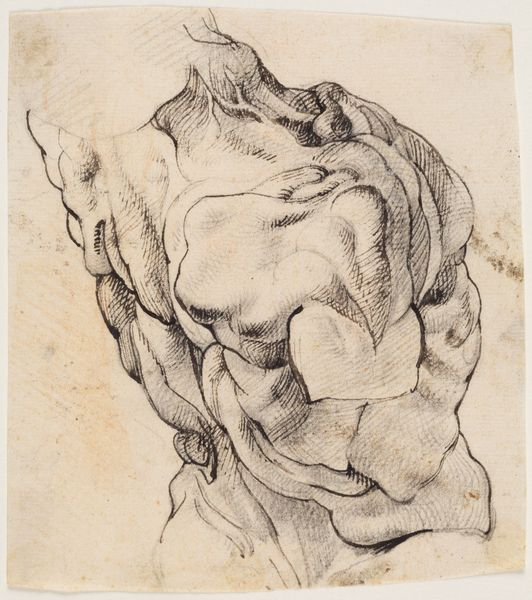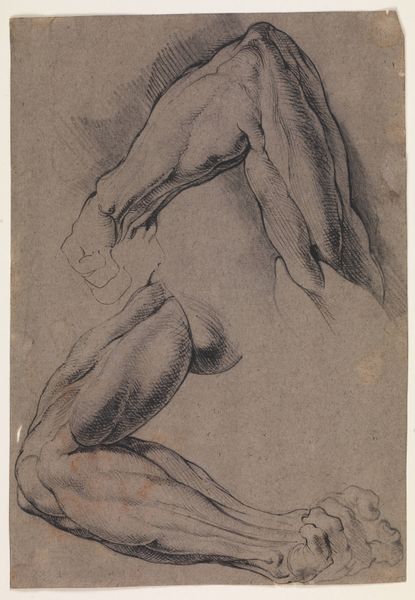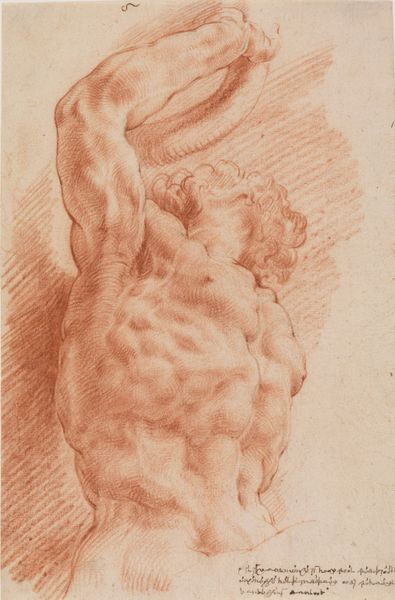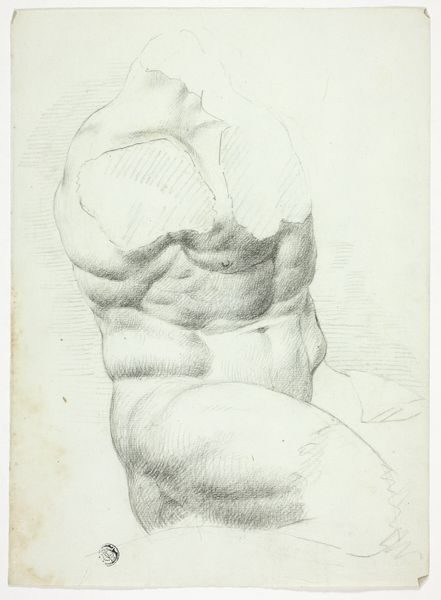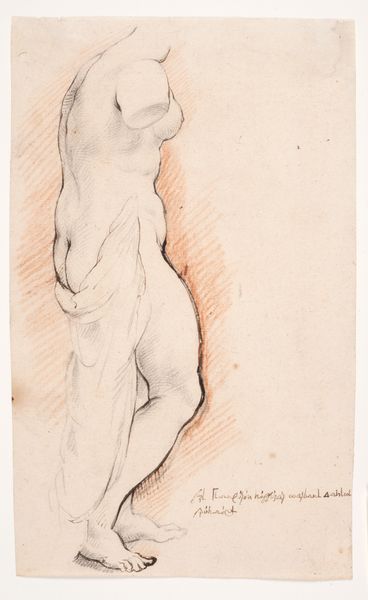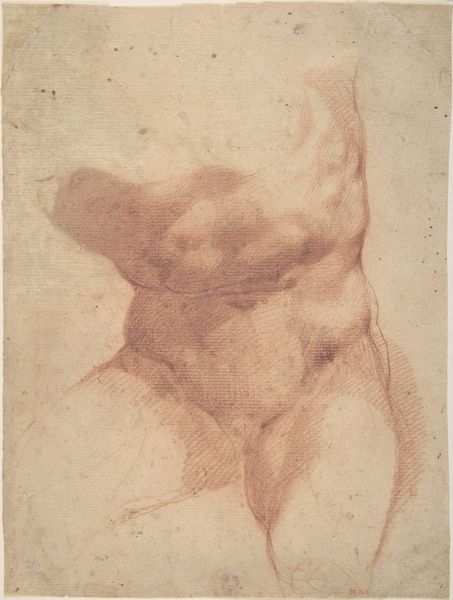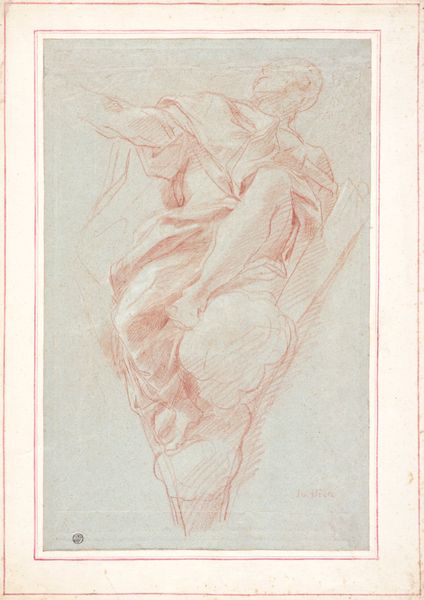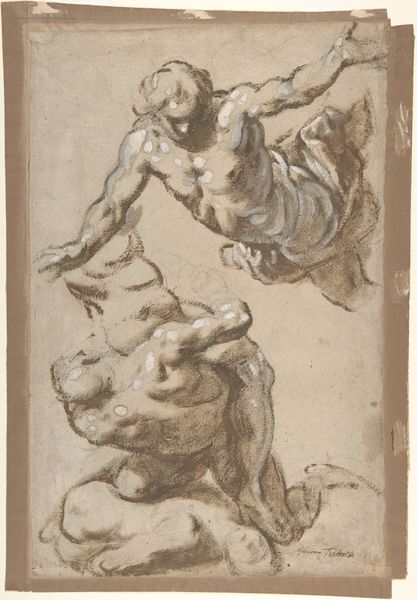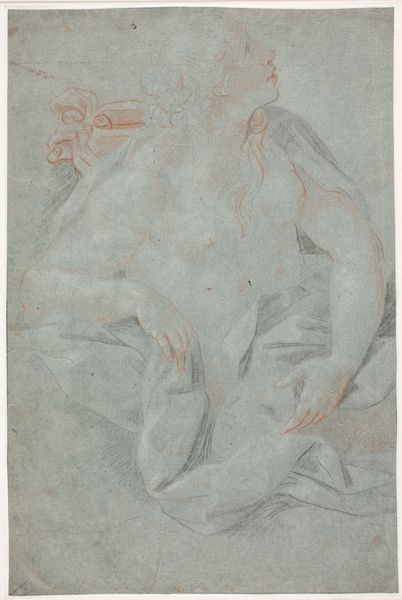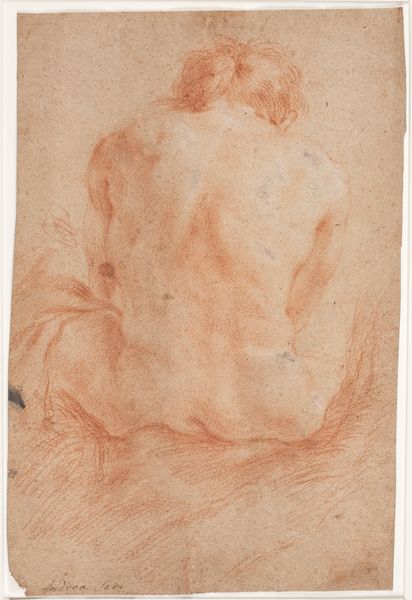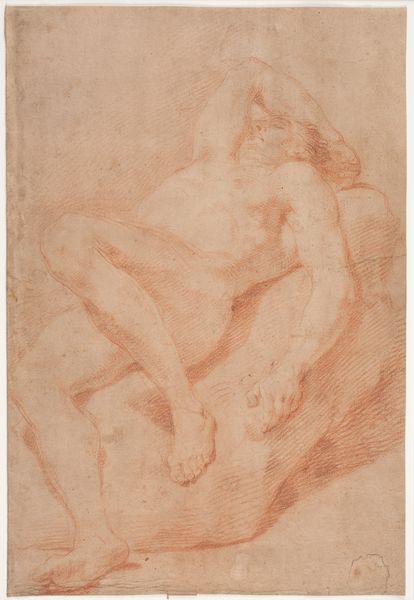
Centaur Tamed. Rear view of the group turned to the left 1628 - 1630
0:00
0:00
drawing, paper, pencil
#
portrait
#
pencil drawn
#
drawing
#
pencil sketch
#
figuration
#
paper
#
11_renaissance
#
pencil drawing
#
pencil
#
academic-art
Dimensions: 433 mm (height) x 286 mm (width) (bladmaal)
Editor: This pencil drawing, "Centaur Tamed," created by Willem Panneels between 1628 and 1630, offers such a fascinating glimpse into artistic study. There’s a softness to it that's unexpected given the subject, almost vulnerable, like the power has been taken out, and it has to just exist, observed on the page. What captures your attention most about it? Curator: Well, I'm immediately drawn to the artist's commitment to detail, which is also slightly whimsical to me; it’s evident in every carefully rendered line that creates the shading of that muscular back! I find it delightful! I wonder, are we witnessing a taming of the inner beast here? Perhaps the centaur represents our dual nature, our struggle between intellect and instinct, human and animal, order and primal nature... Editor: That's such a lovely point. The back view emphasizes the muscularity, sure, but without the context of the face or any active posture, it lacks aggression. What do you think Panneels might have been aiming for by showing the Centaur's back instead of facing the viewer? Curator: Perhaps he wanted to turn our gaze inward as well. Maybe Panneels is subtly nudging us to consider what aspects of ourselves we try to keep hidden or which are kept hidden. And the gentleness, ah, I see it now. He may have been challenging us to tame those beasts within *ourselves.* Editor: That makes so much sense, actually, and also maybe asks us to have empathy for that part of ourselves too? What a way to re-think how to observe a portrait! Curator: Exactly! It turns the observer into an internal archeologist, rummaging for truths. I feel changed.
Comments
No comments
Be the first to comment and join the conversation on the ultimate creative platform.
